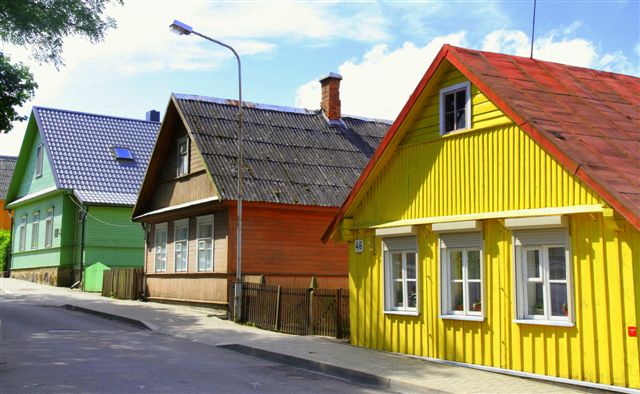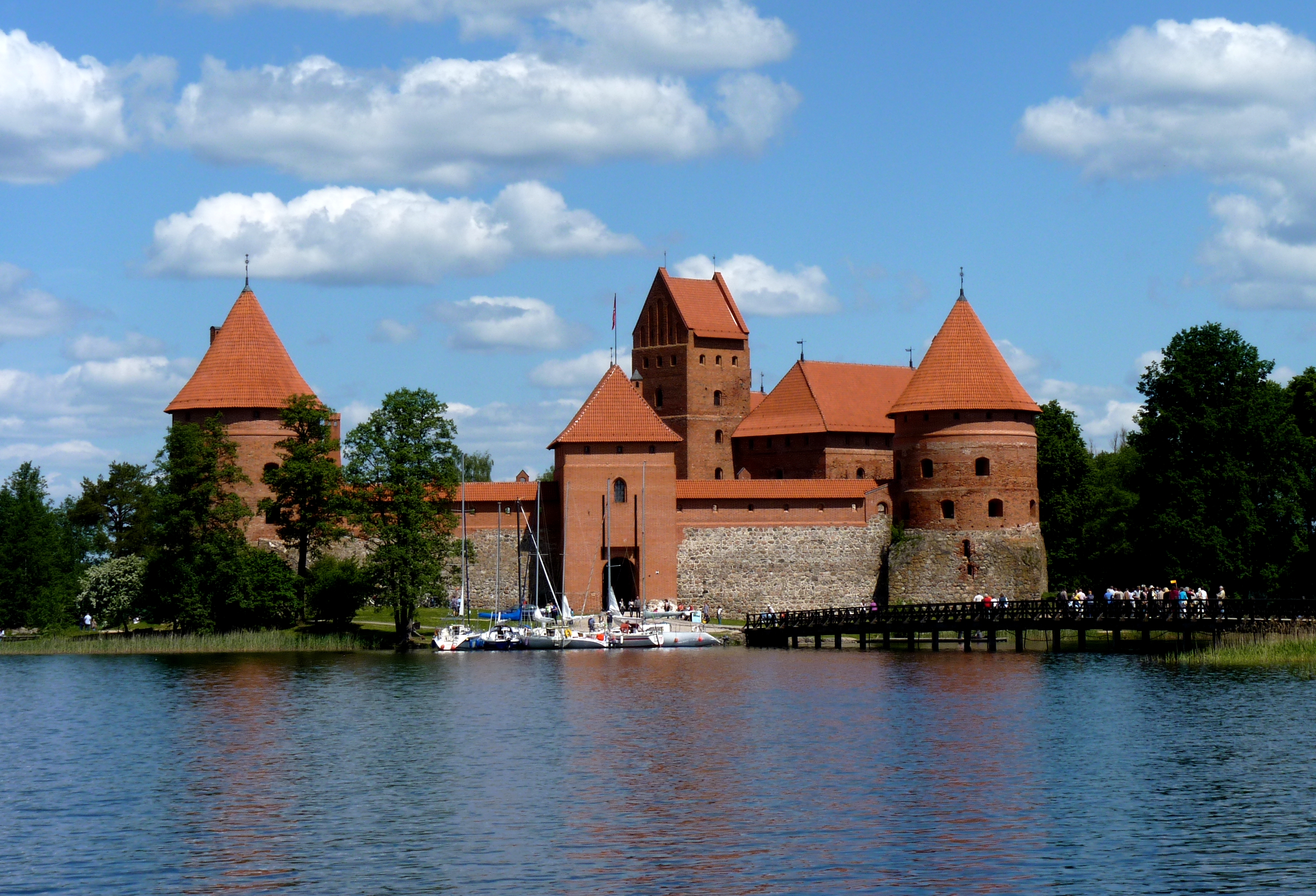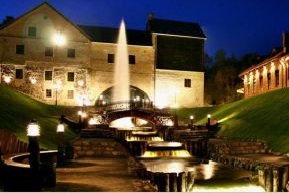|
This page contains link of general interest for travellers about Vilnius. For more practical details check the "Practical Information" website.
General information
Vilnius is the capital of Lithuania and also its largest city (Population of 539,939 in 2014).Vilnius is located in the southeast part of Lithuania and is the second largest city of the Baltic states.It is known for its Old Town of beautiful architecture, declared a UNESCO World Heritage Site in 1994. Its Jewish influence until the 20th century has led to it being described as"the Jerusalem of the North". In 2009, Vilnius was the European Capital of Culture, together with the Austrian city of Linz.
History
A summary of the history of Vilnius can be found here. Interestingly, it also shows the conference venue how it looked under Soviet times.
Getting around in Vilnius
There is no subway or light rail in Vilnius (although there are constant talks on the construction of such things in the city). Nevertheless, Vilnius has an extensive network of public buses. They reach even the most remote areas of the city as well as low rise suburbs. The timetables to some areas may be scarce, but they are never rarer than once in two hours and usually at least one bus an hour. On the most popular routes there is one bus every 10 or 15 minutes. However, buses do not serve the city due to the narrow lanes. Nevertheless, sightseeing in the Old City can be done on foot easily.
There are three kinds of buses, ordinary ones, trolleybusesand express buses. Trolleybuses generally travel on most busy routes and their timetables are more frequent. During the morning and evening rush hours there may be a trolleybus every couple minutes on certain routes. Express routes marked with letter "G". They are as frequent as trolleybuses and somewhat faster than regular public transport as they stop only at roughly half of all stops en-route. Note that the same numbers are reused for bus, trolleybus and fast bus routes (i.e. bus no. 1, trolleybus no. 1 and fast bus no. 1G are not related at all).
The same one-time ticket (30 min or 1 hour with transfers possible) applies for all public transport. You can buy them at kiosks or from the driver (EUR 1,- in the latter case, allowing unlimited changes). Tickets for shorter times (30 miutes, 60 minutes) are cheaper, can be bought from the kiosks and there are reductions for students, seniors etc. If you buy themfrom the driver it costs approximately 25% more (this money goes to the driver as a compensation for additional job) and you might find it difficult to explain the one you want. The different prices are listed here.
The final public buses and trolleybuses leave at around 23:00 and in some stops it can be as late as 23:40. There are night buses, mostly on Friday and Saturday.
The timetables of Vilnius public buses, trolleybuses and some private buses are available here. A powerful journey planning tool, maps with all stops, traffic information are also included in this multilingual website.
Car parking is free in most of the city but has to be paid for in the Old Town, New Town and ssome other quarters. During the rush hours (~7:00-8:30, 17:00-18:30) avoid driving towards downtown as main thoroughfares get clogged. There are lots of pedestrian streets and one-way lanes in the Old town, so driving can be an adventure.
Travelling by taxi is not recommended as taxi drivers are known to cheat people, especially (but not only) foreigners. Experts can inflate prices as much as 10 times. If you want to take a taxi from or to the airport, read the relevant pages at the "Venue & Access" page of our website thoroughly.
Vilnius downtown has an automated bicycle rent system where a short rent is free. Look for orange bicycle racks. Also, there is a bicycle rental company, Velovilnius close to the conference (at Pylimo gatve 10).
Sights
Vilnius Old City has one of the highest densities of old churches in the world. However, only several among them survived the Soviet occupation without getting closed, mostly only the Russian Orthodox and Catholic ones (Saint Nicholas, Saint Theresa, Holy Spirit and Saint Ann Roman Catholic churches and all the Russian Orthodox churches except for Paraskeviya). The closures meant not only a cease on celebrating the Holy Mass, but also massive desecrations, ransackings and remodelling as the buildings were put to other uses (sports halls, warehouses, museums). Since money is scarce and the number of churches large, some ares still not renovated (or just at the outside). Architectonically very interesting ones include:
-
The classicist Vilnius Cathedral (1801)
- The flamboyant Gothic St. Anne church (1500)
- Saint Michael late Rennaisance church (1594)
- Russian Orthodox Cathedral of Ascension (the most important Orthodox church in Lithuania
- Saint Casimir Jesuit church (1614)
- Saint Nicholas Russian Orthodox church (from mid 19th century)
- The Chapel of Virgin Mary in the Gate of Dawn, notable for its painting of Virgin Mary that is visible to everybody passing the gate. Pilgrims to this chapel are frequently seen; it is one of Lithuania's most important religious places
- Church of Saints John (1426 - 1610, Pilies Street) belongs to Vilnius University and it is also the place where students eventually receive their diplomas. The tower of the Church of Saints Johns is the tallest spire in Vilnius, you can accend in a newly installed elevator and see the best views of Vilnius Old Town
- Holy Spirit church (home of the Polish community) from 1776. The church survived without major closures or desecrations.
- Saint Nicholas Roman Catholic church (the oldest church in Vilnius built for a community of German Hanseatic merchants in 1320) This Gothic church is so small because Lithuanians were still Pagan at the time. The interior vault decor showing human-faced Sun and Moon reminds that the artists who painted it were most likely Pagan. It was among the few churches not closed down by the Soviets.
Nevertheless, you would be wrong if you just would visit churches. There are also couple of interesting museums in Vilnius:
- The old Vilnius University with the University Museum, the Belfry (of St. John's church) and its library. Information about opening times can be found here.
- The Lithuanian National Museum is not only the largest collection of the Lithuanian cultural heritage. It is also the oldest museum of Lithuania, whose history goes back to the Vilnius Museum of Antiquities established in 1855 in Vilnius. It has several collections, the most important of them located in the Old and New Ardenal below Gedimias tower. Information about the museum and opening times can be found here. Arsenalo gaatve 1 -3. Most collections open Tue-Sun 10:00 - 18:00.
- The Amber Gallery Museum: Although not officially a museum this two-storey shop to amber offers explanations in English, German and Lithuanian about the formation, colour, harvesting and processing amber. Amber polishing demonstrations available upon request. Information about the museum and opening times can be found here. There is no entrance, but peope ask you to buy a souvenir card if you do not buy anything. Šv. Mykolo gatve, usually open 10:00 - 19:00.
- The Vilnius Picture Gallery is a part of the Lithuanian Art museums. It shows
Information about the gallery and other collections of the Lithuanian Art museum and opening times can be found here.Didžioj gatve 4, Open Tue-Sat 11:00 - 18:00, Sun 12:00 - 17:00.
- The Museum of Genocide Victims is situated in the former KGB building, where the crimes of the Soviet regime were planned and executed for fifty years. Visitors can visit the former KGB prison, the premises where death sentences were implemented as well as modern exhibitions telling about the loss of independence in the middle of the 20th century, repressions by Soviet authorities, and the fight for independence.
Information about the museum and opening times can be found here.Aukū street 2, Open Wed-Sat 10:00 - 18:00, Sun 10:00 - 17:00.
- The Holocaust Museum tells of the culture and history of a once prolific Lithuanian ethnic minority, it tells the story of the Jews from their arrival in the Grand Duchy of Lithuania till their tragic death in the 20th century.
Information about the museum and opening times can be found here. Pamėnkalnio St. 12, Open Mon-Thu 09:00 - 17:00, Fri 10:00 - 16:00 Sun 10:00 - 16:00. Closed Saturdays.
- The Tolerance Centre The Tolerance Center of the Vilna Gaon State Jewish Museum is located in a historical building amd shows permanent and temporary exhibitions of Jewish Life in Vilnius.
Information about the museum and opening times can be found here. Pamėnkalnio St. 12, Open Mon-Thu 10:00 - 18:00, Fri 10:00 - 16:00 Sun 10:00 - 16:00. Closed Saturdays.
- Other, more specialised, museums in Vilnius can be found under the following website.
If you want to visit many museums and sights it might be ise to buy a Vilnius card, which offeres free or reduced entries to many places. There are versions for 24 and 72 hours, the former with and without public transport. Infos and prices can be found here.
Furthermore, if you like a bit of a walk around the Vilnius City area seeing some other places you can try to:
- Walk up or take the funicular up to the hill to Gediminas tower and enjoy a very nice view over the city.
Information about the tower and opening times can be found here. Arsenalo St. 12, Open Daily 10:00 - 19:00 (in April).
- Take a stroll through the newly renovated Bernardine garden withits flowerbeds, play areas and cafes.
- Take a look at the Bastion of the Vilnius Defensive Wall overlooking the Vilnia valley. There is also an exhibition opening Wed-Sun 10:00-18:00. Boksto gatve 18-20
- Walk up the Hill of the Three Crosses and enjoy the panoramic view of Vilnius there.
- Take a walk through the Bohemian quarter of Užupis, with its peculiar constitution. Make sure you see one of the yards (respect the privacy of the inhabitants though) and conclude the walk with a coffee/beer on the terrace of Užupio kavine overlooking the Vilnia river.
Shopping
Compared to other European states, Lithuania is still an inexpensive country. Shop opening hours differ quite a lot, but many shops close on Sundays. The following souvenirs are usually a good choice:
- Amber jewellery. Good shops are the Amber Gallery Museum and Amber. Buying amber from market stalls is discouraged, it might be fake (plastics). Real amber floats on water (as opposed to most plastics).
- Clothes made from linen. Good stores are "Linen Tales", and "Linen & Amber"
- Hand-woven baskets (Lithuanians like to collect berries and mushrooms)
- Lithuanian music. A good shop for CDS (and even vinyl records) is Rangainė at Skapo street 3 (only 300m from the hotel).
- Berry jams and dried mushrooms (not the magic ones)
- Ceramics, leather and wooden artefacts. A very good address is the Vilnius Old Crafts Workshop at Savičiaus str. 10 (open Mon - Sat 11:00 - 19:00). With some luck you can see the craftsmen working there.
- For children: High-quality wooden toys (starting to get expensive though)
For traditional handicraft products also check out the website of the Lithuanian heritage A small, but nice souvenir shops is situated in Liejklos gatve opposite the hotel. They sell cuddly toys made of linen and other small things (and widely refrain from tourist kitsch).
Restaurants
For suggestion of restaurants in Vilnius check our "Where to eat?" webpage.
Climate
The climate of the Vilnius can be described as typical European continental influenced climate with warm, dry summers and fairly severe winters.
During end of April the daily average minimum temperature is 5 degrees (Celsius), whereas the average daily maximum is 16 degrees centigrade. Average rainfall is 40 mm in this month, normally 14 rainy days are recorded in April (hopefully none under the conference). There is a small probability of snow (5 percent) during the conference. Some consolation: In case of snowfall during the conference, the Chair of the COST Action TD1308 will pay for the drinks at the conference dinner.
Clothing & Equipment
Clothing should be adapted to the Lithuanian weather (see "Climate" above). Rain showers can take place, so it is wise to bring rain gear. Since many roads in the old city as well as in Trakai are cobbled, good shoes are an advantage. If you are moving in a wheelchair, please inform the conference organisers.
Criminality
Generally, the level of criminality is not too high in Vilnius (horror stories from tourists are taken with a bit of a pinch of salt), but one should, nevertheless, be prudent: Pickpockets do operate in Lithuania, especially at crowded places. Cheating tourists is also not too common, although rip-offs by taxi drivers have been frequently reported (read the info on the "Venue and Access" page if you want to get to or from the airport by taxi.
DO NOT leave valuables in your car, car burglaries are a problem, especially near tourist places. Areas where dubious "gentlemen's clubs" are prevalent should also be avoided. Furthermore, the area around the railway station in Vilnius is not the best one to walk around a lot at night. Also, sites where a lot of drunk people gather are better avoided.
At Artis Centrum Hotel, there are safe boxes in the rooms for your belongings.
Money
Since 1 January 2015 Lithuania has the Euro. Cash can be obtained with these cards at ATM machines, they are very abundant in Vilnius.There is a DNB branch with an ATM close to the hotel at Totoriu gatve 1 (on the corner to Gedimino pospektas).. Credit cards are widely accepted (Amex a bit less) but at small places and market stalls cash is still king.
The use of traveller cheques as payments is uncommon.
Tourist information
For tourist information about Lithuania check the site of the Lithuanian tourist office. Information about the City of Vilnius can be found here. Also, checkout the page "About Vilnius" under the "Information" header on this website.
The closest tourist office from the Venue is located in Vilniaus gatve 22. It opens daily from 09.00 to 18:00.
! Disclaimer !
All the information given above is to the best of our knowledge. However, we cannot accept any liability for inadvertently false or incomplete information on this site.
|






